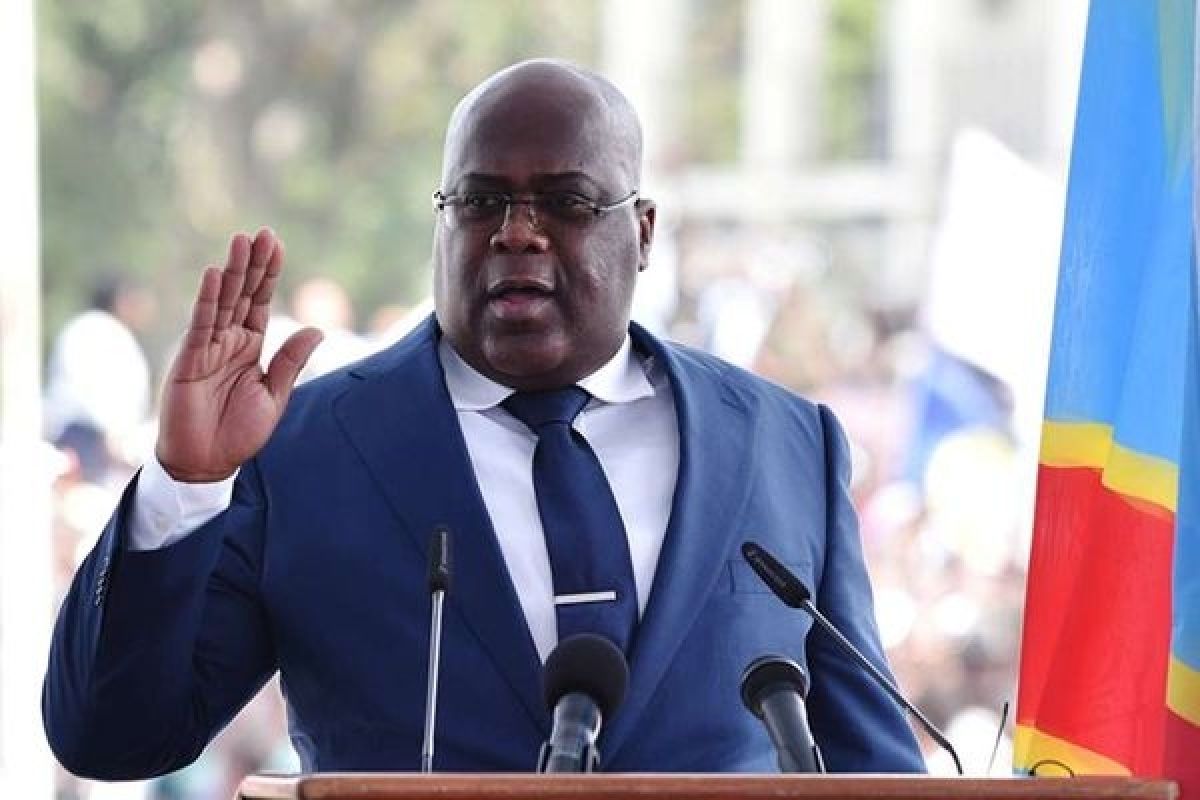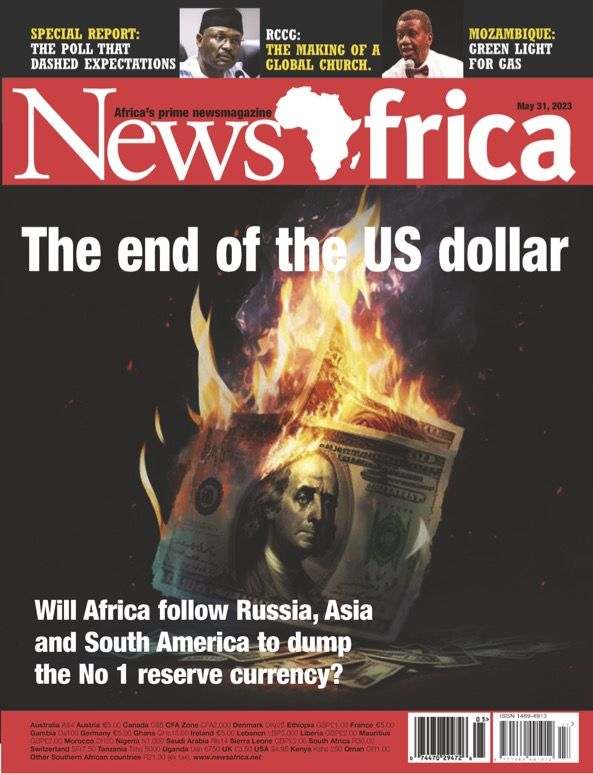
Congolese traders welcome the move to join the East African Community (EAC), but could Kenya be the real winner from the bloc's expansion? By Issa Sikiti da Silva in Nairobi.
A group of Congolese cross-border traders gather together at a rundown compound in the outskirts in the Kenyan capital Nairobi.
They’re having an animated discussion about the Democratic Republic of the Congo (DRC)’s admission into the East African Community (EAC) on April 8.
‘I’m going back to Goma via Uganda and I’m sure this is the last time I’ll pay for a visa,’ 57-year-old Rita Muhindo, told NewsAfrica.
‘The money that Kenya, Tanzania and Uganda got from me for the past 10 years is enough.'
The widow and mother of four has had to fork out $50 every three months for a visa to enter the three countries.
Muhindo and the other Congolese women are expected to enjoy free border crossings when the DRC officially joins Kenya, Uganda, Tanzania, Rwanda, Burundi and South Sudan in the economic bloc.
Small scale cross-border trade constitutes a vital source of employment for the poor in the DRC.
An informal, mainly female-intensive sector, it is a major lifeline for low-income and low-skilled women in border districts, according to the United Nations Conference on Trade and Development (UNCTAD).
However, most of these women face challenges ranging from sexual harassment, extortion and discrimination from border officials.
These are challenges that one of the women, 48-year-old Bahati Sefu, hopes will disappear after her country has joined the EAC.
'There are instances when border officials ask us for sexual favours in order to let us enter with some goods, or without a visa. That surely breaks our hearts because we don’t cross borders for prostitution but to buy and sell in order to feed our families,' the single mother-of-three said.
Despite being a source of income to about 43 percent of Africa’s population, informal cross border trade is generally regarded as illegal commercialisation of cross-border activities, the Sustainable Development Goal’s Fund (SDGF) said.
Muhindo claimed that border officials in Uganda, Tanzania and Kenya let the EAC traders move smoothly, while looking down upon on the Congolese as if they were some kind of terrorists.
'They should treat us all equally. I’m sure from now on all these obstacles will be a thing of the past,' she said, urging EAC authorities to move fast to scrap the visa.
Poorva Karkare, policy officer for African economic integration at the European Centre for Development Policy Management (ECDPM), told NewsAfrica: ‘Signing an agreement does not automatically eliminate challenges to cross-border trade.
'Tedious customs procedures remain a challenge within already existing members of regional blocs, including the EAC, even harmonisation of procedures is a stated aim. DRC didn't even, until now, have such a stated aim. Even in terms of visas, it may possibly take longer to actually come into force.'
According to the Netherlands-based economist, trade between the DRC and the rest of East Africa is already flourishing.
‘The eastern part of the DRC is much more integrated in the EAC countries with affinities in terms of language, kinship ties which has led to (informal) trade flows, so this could be a formalisation of those relations.'
Uganda's President Yoweri Museveni pointed out these strong historical, social and cultural links with EAC partner states in March, adding that he had been personally waiting for the past 60 years to see the DRC reconnect with the EAC.
However, reconnecting – on paper – could be somewhat different from the realities on the ground where cross-border traders struggle to get their goods across to move freely.
'The question is, would it make it easier for these people to trade in terms of procedures? Perhaps, if border procedures are simplified, and for instance transport policies allow goods to be carried more smoothly from one country to the other,' Karkare said.
'The DRC is strategic that way because major transport corridors pass through it and the vast country connects the eastern, southern and central parts of the continent. But that requires more than just admission to the EAC to fulfill that strategic role.'
Nevertheless, despite being a sleeping and limping giant, the DRC appears to be welcomed with open arms in the EAC.
The admission of this vast, resource-rich nation of over 90 million consumers seems to have become the talk of Nairobi, with the East African media and government officials bragging about the future economic, political and business greatness of the regional bloc since the treaty signing between President Felix Tshisekedi and his Kenyan counterpart, Uhuru Kenyatta, in Nairobi.
'Admitting DRC into EAC is historic for our community and the African continent at large. It demonstrates the agility of the community to expand beyond its socio-cultural boundaries to new people and trade-centered partnerships and collaboration, thus increasing trade and investment opportunities for the citizens,' said the outgoing Kenyan president.
Bruce Byiers, an economist at the European Centre for Development Policy Management (ECDPM), told NewsAfrica that the DRC’s entry into the EAC would massively increase the EAC market, and should ease already existing trade through simpler procedures, turning the bloc into something of a political powerhouse.
Kenya’s export earnings from DRC stood at about $122 million in 2020, while Uganda in the same period earned nearly $420 million in trade exports with the DRC, including $177 million in informal trade exports.
These figures demonstrate the enthusiasm of East African officials about the DRC joining the EAC.
But it would appear that the DRC, a country with a relatively weak and non-diversified economy that produces almost nothing, will have nothing to sell to its partners apart from its minerals and other raw natural resources, some of which are already being smuggled out of the country by its neighbours amid ongoing armed conflict.
'If we're talking formal trade between DRC and neighbouring countries, this indeed is limited given DRC's economic structure. But there have been significant informal trade flows in agricultural commodities as well as minerals,' Byiers said.
Karkare agreed: 'Informal cross-border trade between DRC and neighbouring Uganda has been booming in the past decade, linked to minerals. Uganda gets a lot of DRC's smuggled gold before refining it and exporting it out. Recently the refinery even attracted sanctions from the US.'
'Simplified trade procedures due to DRC's EAC admission on the one hand could reduce the incentive for gold smuggling as formal costs come down, on the other it may in fact promote more forced labour and gold mining using hazardous chemicals to maximise profitability. But DRC's mineral wealth is also of interest to neighbours, perhaps Kenya more so, for their own electronics manufacturing.'
The DRC’s precious minerals include two-thirds of the world’s coltan reserves, as well as diamonds, copper and cobalt, which is used in making vehicle batteries.
Furthermore, the DRC is home to globally significant deposits of hard-rock lithium.
The mineral is considered critical to renewable energy technologies as a key component of batteries.
Estimates are that global lithium demand could grow up to 40-fold by 2040, driven by richer nations' efforts to decarbonise their economies, according to Global Witness.
Some observers strongly believe that Kenya – Africa’s sixth-largest economy with a Gross Domestic Product (GDP) of $106bn – is set to benefit the most in terms of investment and business from the DRC’s admission into EAC.
Kenya’s Equity Bank, Africa’s seventh’s largest bank, is already operating in the DRC, having bought Congo’s ailing Pro Credit Bank and Banque Commerciale du Congo (BCDC).
Equity Group MD James Mwangi, an ally of President Kenyatta, told the East African newspaper that he was excited about the DRC’s admission into EAC.
'Yes. It's incredible. It harmonises monetary and fiscal policy, making it very easy for us to integrate the two banks because the regulation will be almost the same, the tax regimes will be the same, the cross-border customs, the movement of people, and labour will be the same… The growth of equity will most likely now be driven by DRC, and I guess that in the next five years, Equity DRC will be bigger than Equity Kenya,’ Mwangi said.
Late last year, nearly 170 Kenyan investors trekked to the DRC on a 14-day visit to the cities of Kinshasa, Goma, Mbuji-Mayi and Lubumbashi to scout for investment deals and opportunities.
‘Swahili is widely spoken in Eastern DRC, which facilitates exchange from a Kenyan perspective,’ said Karkare.
‘Moreover, Kenya as the largest economy is best able to position its exports to the DRC and is the largest potential investor in the region and rightly sees many opportunities it can leverage on. So, Kenya's interest could be more forward looking. They could also be eyeing the DRC to get its cargo which currently mostly goes via Dar es Salaam and Beira.’
Voted the continent’s most integrated economic bloc by the Africa Regional Integration Index (ARII) in 2019, the EAC – with a GDP of nearly $250bn – is said to be planning to create a common currency in the next three years.
The bloc faces many challenges in its bid to become a global power, including infrastructure problems, corruption and instability along its borders.



